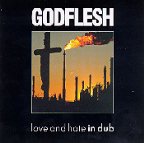
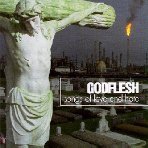

God-flesh: God-man: Son of God: Jesus: Jesu.
Justin Broadrick's bands Godflesh and Jesu not only refer to Jesus Christ in their band names; their iconography also refer to Him. Surprisingly, I've never read an interview in which the role of Christian imagery is examined. So, what is there to do but to speculate?
On Godflesh's 'Streetcleaner' the cover art, a still from Ken Russell's 1980 film Altered States, shows a hazy picture of Golgotha, the Place of Skulls, against a fiery, hellish background. The magnificent second track, "Christbait Rising" of course also refers to Christ, even though the lyrics are unintelligible: "Don't hold me back, This is my own hell / Christbait, Slugbait, Rise and bring you down / Christbait Rising, In your own mind / Christbait Rising, Bleed dry mankind".
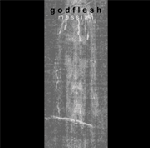
The title of Godflesh's 1995 ep 'Messiah' speaks for itself. The title song's lyrics explicitly refer to the Cross: "You see / their truth / You know / their lies / give me fire / give me air / give me fire / give me air / give me fire / You see / your cross / We'll blame / our loss". The orginal ep featured the shroud of Turin on it's cover.
The song titles of 'Love And Hate' also point towards Christian issues: "Sterile Prophet", "Gift From Heaven", "Angel Domain", "Kingdom Come" and "Almost Heaven".
The inlay of 'Selfless' shows a humanoid robot hanging from the cross; the title of 'Hymns' obviously refer to Christian songs of praise. The title of the last and most powerful number of that cd was to become the name of Broadrick's next band after Godflesh split: Jesu. It's lyrics: "Nature will step on you, / nature will eat you up, / Jesu...Jesu / Nature don't care for you, / nature don't see you. / Jesu...Jesu / You're Fucked / You've Lost".
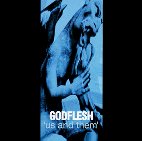
Several cd's show Church-related artwork:
- the inlay of 'Pure' had two photographs of (neo?-)gothic stonework from a church or cathedral;
- the interior of the cd booklet of 'Selfless' has a still from the eerie 1962 film 'Carnival of Souls', showing a stained-glass church window bearing the words 'Cast Out Devils';
- the cover art of 'Us And Them' shows a gargoyle (gargouille) from some unknown church or cathedral;
- both 'Love And Hate' and 'Love And Hate In Dub' show a crucifix against a backdrop of petrochemic industry.
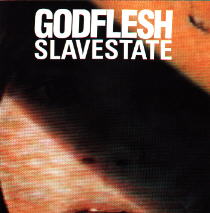
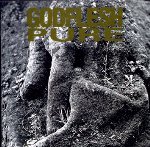
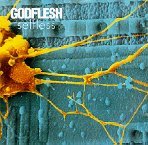
Godflesh is also the synthesis of the thesis 'Flesh' and the antithesis 'God'. All that opposes Flesh can take the place of God:
- Thus, the cover art of 'Slavestate' shows a picture of the face of a young boy (Flesh, the real) - but it is obviously a screen shot from television (unFlesh):
- 'Pure's cover art is a close-up black and white photo of the hand (Flesh) of a stone (unFlesh) statue from Greece;
- The cover art of 'Selfless' shows a human nerve cell (Flesh) growing on a microchip (unFlesh).
I've never read an interview in which Broadrick is questioned about the meaning of all Christ-related imagery in his work - not even in The Wire!. The subject seems to be studiously avoided by most journalists - probably it is a bit too personal, a bit too embarassing, a bit too uncool for most music journalists of the industrial and metal variety. Personally, I've always felt that Broadricks handling of this subject was much more adult than most metal bands - no childish satanic clichés here and certainly no 'white metal' (a disgusting genre) here either. Broadrick's focus appears to be on the tragic aspects of the Christ myth, on the suffering Christ, tortured, humiliated and crucified - a tale that is just as brutal as Godflesh's music.




1 comment:
awesome article. great info. thanks
Post a Comment